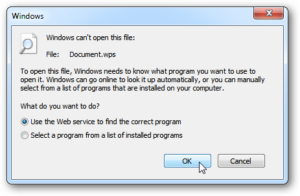 Ransomware has been striking businesses of all sizes, including municipalities, impacting their infrastructures. In the past three months, cybercriminals have successfully attacked six major cities. In each case, the attack brought great inconvenience to the victims. The city of Baltimore was hit weeks ago, and are still trying to recover from the ransomware attack.
Ransomware has been striking businesses of all sizes, including municipalities, impacting their infrastructures. In the past three months, cybercriminals have successfully attacked six major cities. In each case, the attack brought great inconvenience to the victims. The city of Baltimore was hit weeks ago, and are still trying to recover from the ransomware attack.
As a managed service provider (MSP), you may receive questions on how you can protect your customers’ data from being encrypted by cybercriminals. Here are some ways to detect the beginning of a ransomware attack, prevent it from spreading, and protect your customers from cyberattacks.
How to detect a ransomware attack
Some of the telltale signs of a ransomware attack include:
- Systems seem to have slowed down. As the ransomware starts to encrypt your files, it will slow down your system. When you start to notice your system slowing down, take precaution, and check file shares for anomalies.
- Users receive a message like the following when opening their files:

If your customer received a similar message when they are trying to access files that they had access to previously, it can be that the file was encrypted by ransomware. Users should report this to their MSP immediately.
- Some users are locked out of their systems: This can be an early sign that the ransomware has encrypted your system.
How to stop ransomware from spreading to your entire network
 If you suspect that a ransomware attack has occurred, perform the following actions to ensure the attack is contained and does not further spread in the customers’ network, or worse, spread through your connection to other customers’ networks.
If you suspect that a ransomware attack has occurred, perform the following actions to ensure the attack is contained and does not further spread in the customers’ network, or worse, spread through your connection to other customers’ networks.
1. Stop the infection from spreading by disconnecting all computers from the network.
2. Stop backing up immediately to ensure the ransomware doesn’t compromise your backup data.
3. Investigate the source of the attack and isolate it from the rest of the network.
Depending on the strand and speed of the ransomware attack, it is possible to contain the attack before your environment is fully infected. However, it is not an easy task. The best protection is prevention. Prevent a ransomware attack by deploying a multi-layered security strategy to ensure your customers are well-protected.
Deploy a multi-layered security strategy against ransomware
Cybercriminals are becoming increasingly savvy with their ransomware attacks. While knowing the telltale signs of a cyberattack can help you and your customers contain an attack and limit the damage it can do to an organization, it is always best to be proactive and take preventive measures to protect your company from becoming a victim in the first place. A sound multi-layered security strategy should include the following:
1. Security awareness training: Cybercriminals are more sophisticated with account spoofing and account takeover. Educate your customers in order to avoid unnecessary link-clicking and attachment opening from unknown senders.
2. Security software: There are many antivirus software and email security solutions available to give your customers the extra defense it needs to fight ransomware and spam emails that may contain malicious attachments/links.
3. Backup solutions: Ensure your customers have a backup of their data using a solution that can address malware in backups. These solutions should have the ability to prevent ransomware by filtering out malware from getting to the backups or to notify MSPs if there are anomalies occurring in the backup.
4. Patch management: Be rigorous about staying up-to-date with your customers’ patches, as many third-party software are commonly used as the exploit for ransomware attacks. Third-party vendors issue regular security updates to ensure that their software is not the cause of cyberattacks for their customers.
How can MSPs help customers prevent a ransomware attack?
Managed service provider (MSP) can remotely manage IT infrastructure for a variety of customers. With the growth of cyberattacks, many MSPs have acquired expertise, the right tools, and skill-set to ensure they can protect their customers from a cyberattack.
You can offer services such as continuous monitoring, security, patch management, business continuity and disaster recovery, and 24/7 Network Operations Center (NOC) to protect customers from cyberattacks.
Don’t let your customers become a victim of ransomware. Be proactive and protect your customers.
Photo: Pira25 / Shutterstock

